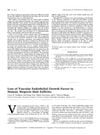signaling protein that, when suppressed, may grow hair by reducing inflammation and stem cell loss
glycoprotein that inhibits TGF-β and promotes hair growth by antagonizing activin
bioflavonoid found in plants with antioxidant and hair stimulating properties


